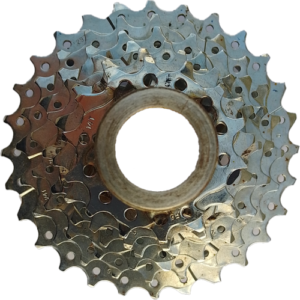Introduction
What is a geometric sequence?
A geometric sequence is a list of numbers where each term is found by multiplying the previous term by the same constant. This constant, called the common ratio, determines whether the sequence grows or shrinks.
For example:
- 2, 6, 18, 54 is a geometric sequence with a common ratio of 3. Since each number is three times the one before, the sequence grows quickly.
- 64, 32, 16, 8 is a geometric sequence with a common ratio of 0.5. Each term is half of the one before, so the sequence shrinks gradually.
This common ratio causes the geometric sequence to grow (or shrink) by a fixed proportion. They’re essential for understanding patterns involving rapid change, like how bacteria multiply in biology or how compound interest works in finance.
Real-life applications of geometric sequences
As mentioned, geometric sequences play a critical role in many fields, including biology and finance. They are also important in mechanical engineering. In this article, we’ll examine how geometric sequences are used by mechanical engineers to design efficient gear systems.
Geometric sequence in mechanical engineering
Mechanical design of bicycle gears
If you’ve ever ridden a bicycle and shifted gears, you’ve seen how the chain moves between sprockets to match the demands of flat terrain or steep hills. Engineers carefully decide how many teeth each sprocket in a cassette should have to ensure smooth shifting and efficient performance.
Previously, we explored how arithmetic sequences are used for this purpose. Now, let’s take a closer look at how geometric sequences also play a role in designing bicycle gear systems.
Geometric sequence defines the changing difference
Take a look at this cassette with 6 sprockets:

The first gear sprocket has 28 teeth, the second has 24, the third has 21, then 18, 16, and the sixth gear sprocket has 14 teeth. Let’s write it in a row:
28, 24, 21, 18, 16, 14.
As you can see, the number of teeth decreases with each sprocket, but unlike in the case of an arithmetic sequence, the difference between two adjacent sprockets isn’t constant:
- The difference between the 1st and 2nd gears is 4 teeth,
- The difference between the 2nd and 3rd is 3 teeth,
- The difference between the 3rd and 4th is 3 teeth,
- The difference between the 4th and 5th is 2 teeth,
- The difference between the 5th and 6th is 2 teeth.
Writing it in a row would give us:
- 28 – 4 = 24,
- 24 – 3 = 21,
- 21 – 3 = 18,
- 18 – 2 = 16,
- 16 – 2 = 14.
This pattern comes from a geometric sequence, where the number of teeth is multiplied by a common ratio of 0.87.
For example:
- 28 ⋅ 0.87 = 24.36 (rounded to 24 teeth)
- 24.36 ⋅ 0.87 = 21.19 (rounded to 21 teeth)
- 21.19 ⋅ 0.87 = 18.44 (rounded to 18 teeth)
- 18.44 ⋅ 0.87 = 16.04 (rounded to 16 teeth)
- 16.04 ⋅ 0.87 = 13.96 (rounded to 14 teeth)
This shows how the sprockets’ teeth follow a geometric progression, with each term in the sequence being calculated by multiplying the previous term by the common ratio of 0.87.
Want more? Watch the geometric sequences video!
We also have a video version where this application of geometric sequences is explained in an easy-to-follow, engaging, and animated format. The video provides additional information, highlights the connection between geometric sequences and exponential functions, and explores their applications in various industrial settings. Enjoy the preview below and consider subscribing to access all of our full videos. (Why subscribe?)
Conclusion
In conclusion, there is no single answer to which sequence would be preferred for a design task like this—it depends on the situation. Arithmetic sequences offer a constant difference between the number of teeth on the sprockets, providing smoother gear shifts. This makes them more suitable for flat or urban terrains. On the other hand, geometric sequences create larger differences between sprockets, which may result in less smooth gear shifts but are better for riding on both flat and cross-country terrains.
This trade-off between simplicity and versatility is common in real-world applications of math.
References
To ensure the accuracy of this article, we consulted the following source, which explains how mathematical sequences are used in designing mechanical gears:
Further reading:
We also have a complementary article explaining the application of arithmetic sequences to the same task of designing bicycle cassettes: Arithmetic Sequence: A Real-Life Example (from Mechanical Engineering).
